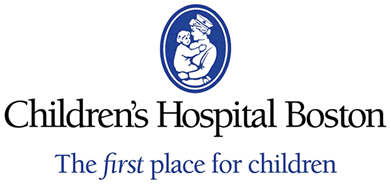TSH Receptor Antibody Heterogeneity in Children and Adolescents With Graves' Disease
| Status: | Completed |
|---|---|
| Conditions: | Endocrine |
| Therapuetic Areas: | Endocrinology |
| Healthy: | No |
| Age Range: | 2 - 21 |
| Updated: | 5/5/2014 |
| Start Date: | August 2005 |
| End Date: | December 2009 |
| Contact: | Rosalind S Brown, MD |
| Email: | Rosalind.brown@childrens.harvard.edu |
| Phone: | 617-919-2866 |
Graves' disease, the most common form of hyperthyroidism in children, is caused by
Thyrotropin (TSH) Receptor Antibodies (TRAbs) that mimic the action of TSH. The disease
leads to significant morbidity in children both due to the prolonged course of antithyroid
medication often required for sustained immunological remission and the high risk of relapse
when medication is withdrawn. The ability to predict which patients are most likely to fail
medical management would greatly improve the choice of therapy. In the past, large goiter
size, age at diagnosis, increased biochemical severity, and decreased body mass index have
all been associated with a poorer prognosis, but these clinical indicators lack sensitivity
and specificity. Preliminary data suggest that the new TRAb assays are both sensitive and
specific for the measurement of TRAbs in children with Graves' disease. In addition,
variation in these antibodies over time is not the same in all patients. The goal of this
proposal will be to prospectively follow children with newly diagnosed Graves' disease and
use microarray technology to determine if there are genes whose expression differ in
patients who respond to medical therapy versus those who will need more definitive therapy
earlier in their disease.
Thyrotropin (TSH) Receptor Antibodies (TRAbs) that mimic the action of TSH. The disease
leads to significant morbidity in children both due to the prolonged course of antithyroid
medication often required for sustained immunological remission and the high risk of relapse
when medication is withdrawn. The ability to predict which patients are most likely to fail
medical management would greatly improve the choice of therapy. In the past, large goiter
size, age at diagnosis, increased biochemical severity, and decreased body mass index have
all been associated with a poorer prognosis, but these clinical indicators lack sensitivity
and specificity. Preliminary data suggest that the new TRAb assays are both sensitive and
specific for the measurement of TRAbs in children with Graves' disease. In addition,
variation in these antibodies over time is not the same in all patients. The goal of this
proposal will be to prospectively follow children with newly diagnosed Graves' disease and
use microarray technology to determine if there are genes whose expression differ in
patients who respond to medical therapy versus those who will need more definitive therapy
earlier in their disease.
In the present grant proposal, we plan to utilize two new assays (binding and bioassay) in
order to identify additional predictors of Graves' disease and apply them to a well
characterized group of patients with Graves' disease followed prospectively. More
specifically, we plan to further investigate the antibodies by measuring lambda: kappa light
chain antibody ratios in pediatric patients. We will assess epitope heterogeneity by using
novel chimeric proteins in which specific portions of the TSH receptor have been replaced
with the closely related LH receptor. We will utilize microarray technology to determine if
there are differences in gene expression profiles in responders versus non responders. It
is hoped that these methods will lead to an improved ability to follow disease progression
and to monitor efficacy of therapy.
order to identify additional predictors of Graves' disease and apply them to a well
characterized group of patients with Graves' disease followed prospectively. More
specifically, we plan to further investigate the antibodies by measuring lambda: kappa light
chain antibody ratios in pediatric patients. We will assess epitope heterogeneity by using
novel chimeric proteins in which specific portions of the TSH receptor have been replaced
with the closely related LH receptor. We will utilize microarray technology to determine if
there are differences in gene expression profiles in responders versus non responders. It
is hoped that these methods will lead to an improved ability to follow disease progression
and to monitor efficacy of therapy.
Inclusion Criteria:
- Age 2-21 years
- Suppressed Thyroid Stimulating Hormone (TSH)
- Elevated Triiodothyronine (T3), Thyroxine (T4)
Exclusion Criteria:
- Pregnancy
- Toxic Nodule
- Currently receiving steroids or thyroid hormone replacement
- Bacterial, Viral, Radiation, or Autoimmune thyroiditis
We found this trial at
1
site
Children's Hospital - Boston Boston Children's Hospital is a 395-bed comprehensive center for pediatric health...
Click here to add this to my saved trials
